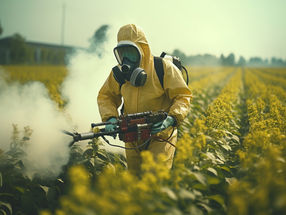New public consultations on epoxiconazole's reproductive toxicity and on CLH proposals
Advertisement
ECHA launched new public consultations on epoxiconazole's reproductive toxicity as well as on new CLH proposals for five biocides/pesticides and nitric acid. The Agency invites the parties concerned to comment within the given deadlines.
Public consultation on reproductive toxicity of epoxiconazole
A number of new study reports regarding the reproductive toxicity of epoxiconazole have recently been provided by industry. According to Article 77(3)(c) in REACH, the Executive Director gave the Committee for Risk Assessment (RAC) a mandate to develop and adopt an opinion on the harmonised classification and labelling for epoxiconazole on reproductive toxicity. Interested parties are invited to comment on epoxiconazole's reproductive toxicity taking into consideration the new data submitted in the additional information report (AIR) and previous RAC opinions.
This public consultation is open for 30 days and ends on 23 July 2012.
Public consultation on new CLH proposals
The six new proposals for harmonised classification and labelling (CLH) are for nitric acid, tricalcium diphosphide, flonicamid, octanoic acid, nonanoic acid and decanoic acid.
The public consultation opens for 45 days and ends on 6 August 2012.
RAC will consider the comments received during the public consultation when developing its opinion on the CLH proposal. The Commission takes the RAC opinion into account when it decides whether the proposal for harmonised classification and labelling is accepted and if so, the substance will be added to the list of hazardous substances for which harmonised classification and labelling has been established (Annex VI, part 3 of the CLP Regulation).
As a new step, relevant parties are invited to identify and register themselves through a dedicated webform. For those who have registered, ECHA may request their participation in additional targeted consultations that may occur after the public consultation on a case-by-case basis.
Table 1. Hazard classes proposed for harmonised classification and labelling and examples of uses of the substances.
| Substance name | EC number | CAS number | Hazard class proposed for CLH | Examples of uses* |
|---|---|---|---|---|
| Nitric acid | 231-714-2 | 7697-37-2 |
Oxidising liquids, Acute toxicity, Corrosive to the respiratory tract |
Used in household cleaning products. |
| Tricalcium diphosphide | 215-142-0 | 1305-99-3 |
Acute toxicity, Skin corrosion |
Rodenticidal active substance. |
| Flonicamid | - | 158062-67-0 | Acute toxicity | Used as an insecticide on potatoes, wheat, apples/pears and peaches.. |
| Octanoic acid | 204-677-5 | 124-07-2 | Skin corrosion, Hazardous to the aquatic environment |
Insecticide, food and feed area disinfectant. |
| Nonanoic acid | 203-931-2 | 112-05-0 |
Skin irritation, Serious eye damage, Hazardous to the aquatic environment |
Biocide for use as a disinfectant, masonry preservative and repellent. |
| Decanoic acid | 206-376-4 | 334-48-5 |
Skin irritation, Serious eye damage, Hazardous to the aquatic environment |
Insecticide, repellent, food and feed area disinfectant. |
| Epoxiconazole | 406-850-2 | 133855-98-8 |
Reproductive toxicity
Note. RAC will limit its assessment to the hazard class of reproductive toxicity when developing its opinion. |
Used as a fungicide e.g. on cereals and sugar beets as protection against leaf spot diseases. |
* Please note that information on uses does not impact the classification and labelling, which is solely based on the intrinsic properties of a substance. Examples of uses are copied from the CLH report.





























































